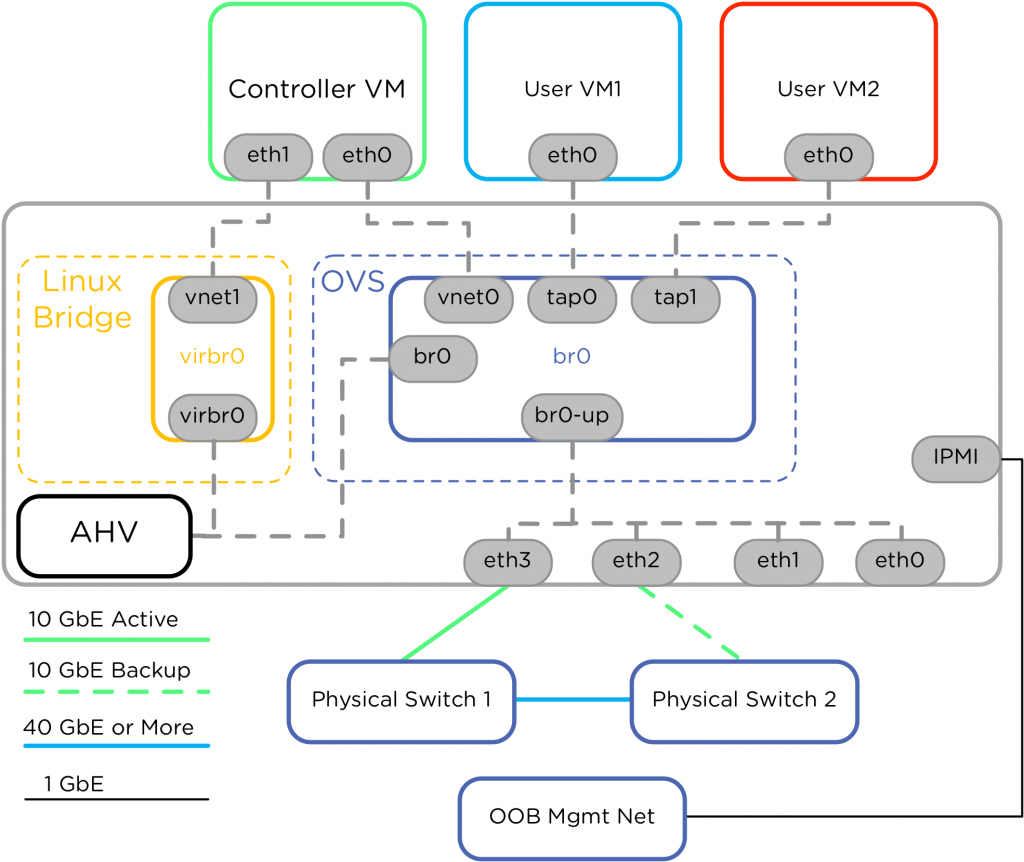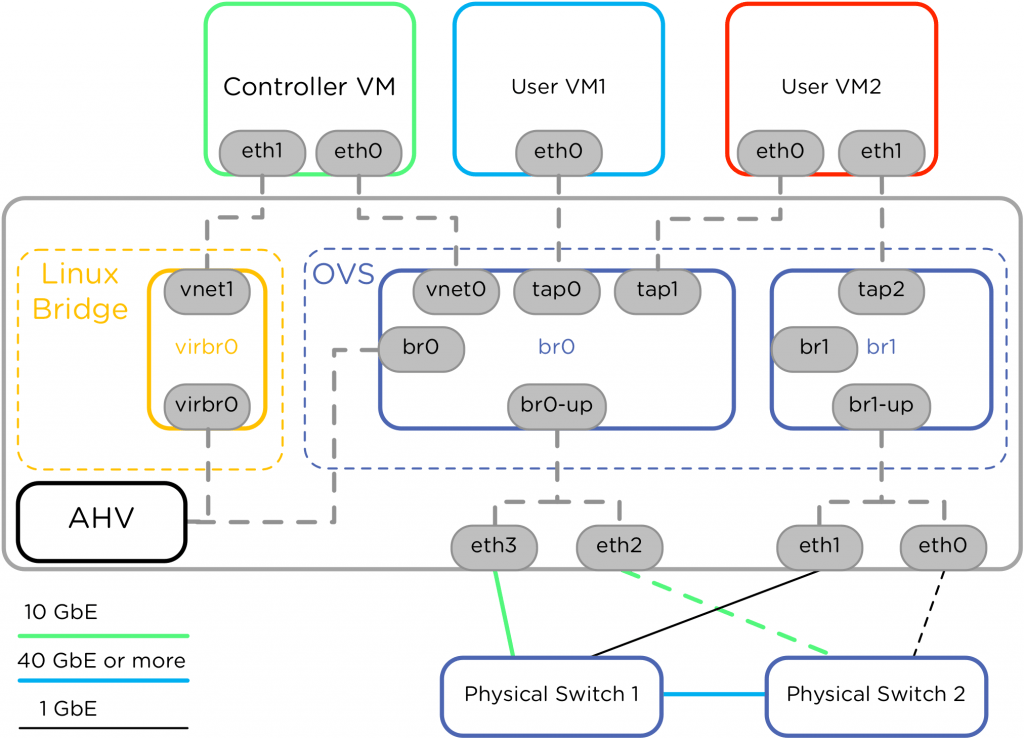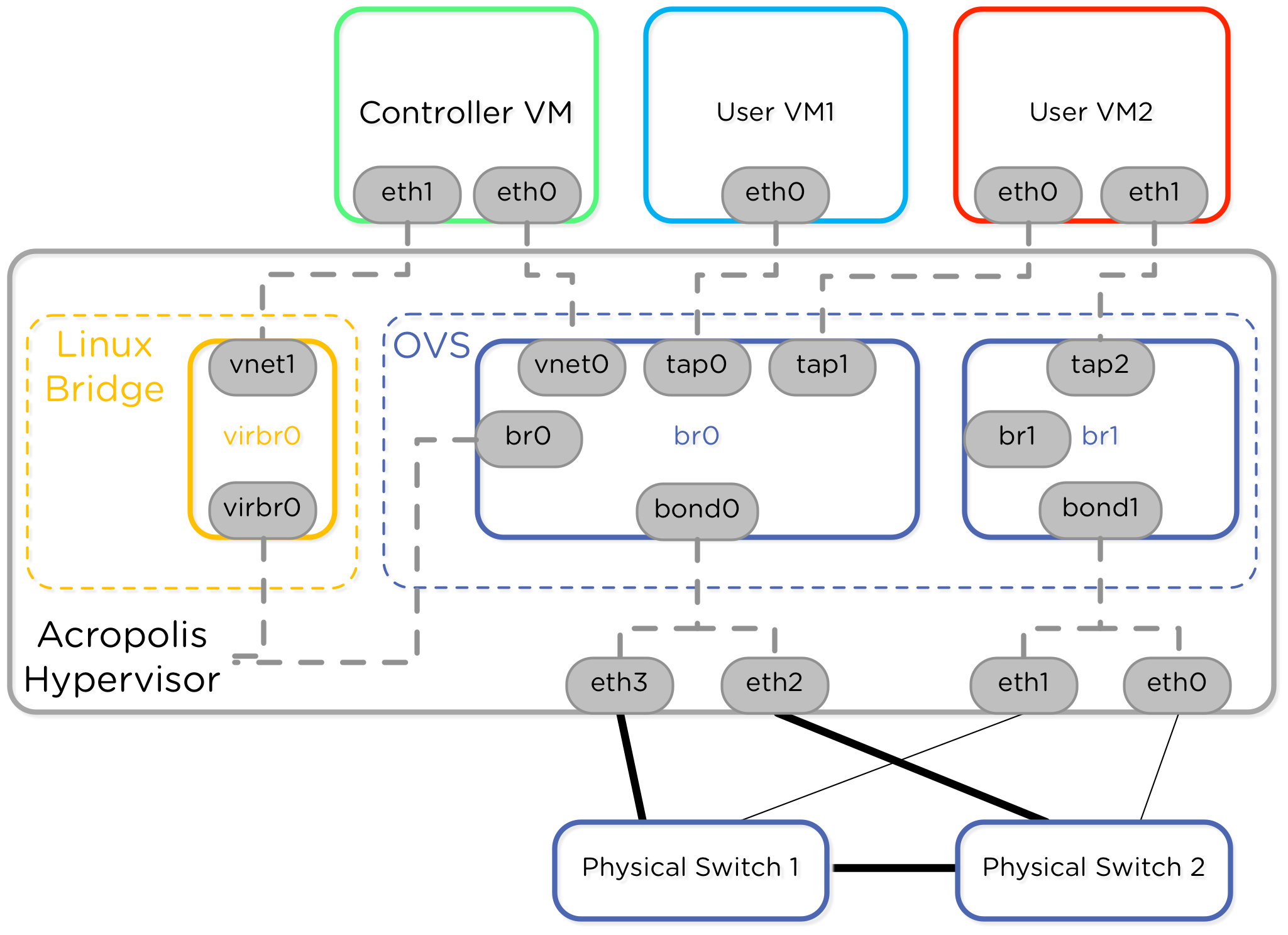In my last blog post I talked about networking with Open vSwitch in the Nutanix hypervisor, AHV. Today I’m happy to announce the continuation of that initial post – the Nutanix AHV Best Practices Guide.
Nutanix introduced the concept of AHV, based on the open source Linux KVM hypervisor. A new Nutanix node comes installed with AHV by default with no additional licensing required. It’s a full-featured virtualization solution that is ready to run VMs right out of the box. ESXi and Hyper-V are still great on Nutanix, but AHV should be seriously considered because it has a lot to offer, with all of KVMs rough edges rounded off.
Part of introducing a new hypervisor is describing all of the features, and then recommending some best practices for those features. In this blog post I wanted to give you a taste of the doc with some choice snippets to show you what this Best Practice Guide and AHV are all about.
Take a look at Magnus Andersson’s excellent blog post on terminology for some more detailed background on terms.
Acropolis Overview
Acropolis (one word) is the name of the overall project encompassing multiple hypervisors, the distributed storage fabric, and the app mobility fabric. The goal of the Acropolis project is to provide seamless invisible infrastructure whether your VMs exist in AWS, Hyper-V, ESXi, or the AHV. The sister project, Prism, provides the user interface to manage via GUI, CLI, or REST API.
AHV Overview
AHV is based on the open source KVM hypervisor, but is enhanced by all the other components of the Acropolis project. Conceptually, AHV has access to the Distributed Storage Fabric for storage, and the App Mobility Fabric powers the management plane for VM operations like scheduling, high availability, and live migration.
The same familiar Nutanix architecture exists, with a network of Controller Virtual Machines providing storage access to VMs. The CVM takes direct control of the underlying disks (SSD and HDD) with PCI passthrough, and exposes these disks to AHV via iSCSI (The blue dotted VM I/O line). The management layer is spread across all Nutanix nodes in the CVMs using the same web-scale principles of the storage layer. This means that by-default, a highly available VM management layer exists. No single point of failure anymore! No additional work to setup VM management redundancy – it just works that way.
AHV Networking Overview
Networking in AHV is provided by an Open vSwitch instance (OVS) running on each AHV host. The AHV Best Practices Guide doc has a comprehensive overview of the different components inside OVS and how they’re used. I’ll share a teaser diagram of the default network config after installation in a single AHV node.

AHV Networking Best Practices
Bridges, Bonds, and Ports – oh my. What you really want to know is “How do I plug this thing into my switches, setup my VLANs, and get the best possible load balancing. You’re in luck, because the AHV Networking Best Practice Guide covers the most common scenarios for creating different virtual switches and configuring load balancing. It also dives into deeper detail than the AHV BPG.
Here’s a closer look at one possible networking configuration, where the 10 gigabit adapters and 1 gigabit adapters have been connected into separate OVS bridges. User VM2 has the ability to connect to multiple physically separate networks with this design to allow things like virtual firewalls.


After separating network traffic, the next thing is load balancing. Here’s a look at another possible load balancing method called balance-slb. Not only does the BPG provide the configuration for this, but also the rationale. Maybe fault tolerance is important to you. Maybe active-active configuration with LACP is important. The BPG will cover the config and the best way to achieve your goals.
For information on VLAN configuration, check out the AHV Networking Best Practices Guide.
Other AHV Best Practices
This AHV BPG is for the standard features you expect from a hypervisor.
- VM Deployment
- Leverage the fantastic aCLI, GUI, or REST API to deploy or clone VMs.
- VM Data Protection
- Backup up VMs with local or remote snapshots.
- VM High Availability
- During physical host failure, ensure that VMs are started elsewhere in the cluster.
- Live Migration
- Move running VMs around in the cluster.
- CPU, Memory, and Disk Configuration
- Add the right resources to machines as needed.
- Resource Oversubscription
- Rules for fitting the most VMs onto a running cluster for max efficiency.
Take a look at the AHV Best Practice Guide and the AHV Networking Best Practices Guide for information on all of these features and more. With this BPG in hand you can be up and running with AHV in your datacenter and get the most out of all the new features Nutanix has added.
